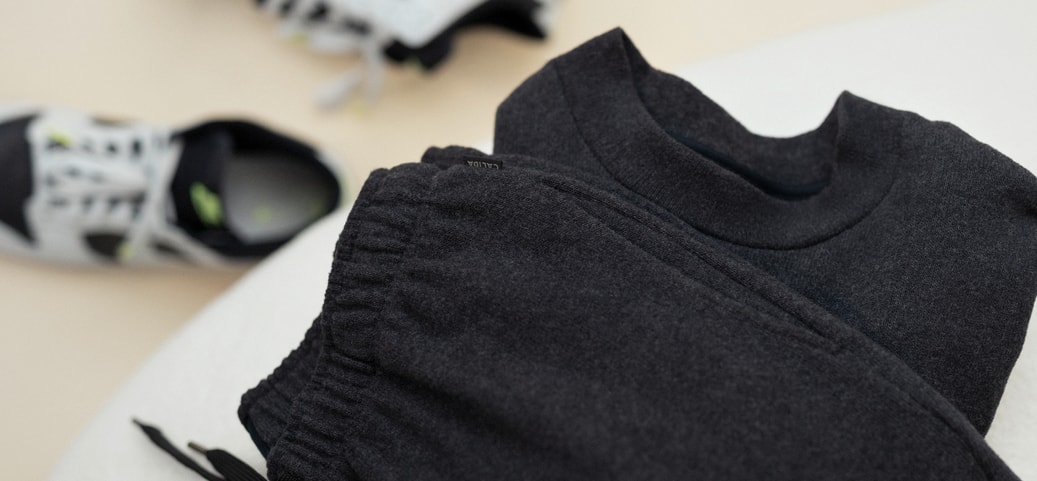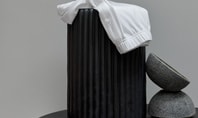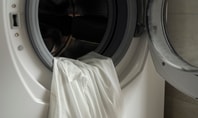Removing stains from clothing: 10 universal tips for dirty laundry
In everyday life, your clothes can quickly become stained. It’s extra annoying when it’s your favourite piece or a particularly valuable item of clothing that is affected. But don’t worry – a stain doesn’t mean you have to say goodbye to your clothes or put them in the drawer with your old pyjamas. With our 10 tips, you will be able to remove stubborn stains from your clothes without any residue!
by CALIDA
February 28, 2024•6 min reading time

Goodbye stains! Our guide shows you how to effectively remove stains from clothing.
Table of Contents
Tip 1: stain pen for on the go
Tip 2: gall soap removes stubborn stains
Tip 3: baking powder and sodium bicarbonate against dirt
Tip 4: vinegar essence and citric acid remove stains and odours
Tip 5: mineral water for stain removal
Tip 6: washing up liquid for grease stains
Tip 7: stain-removing salts for severe discolouration
Tip 8: wash at higher temperatures
Tip 9: cold helps with these stains
Tip 1: stain pen for on the go
Accidents happen most often when you’re out and about, be it splashing tomato sauce and red wine, cycling through puddles or picnicking on a freshly mowed field. However, having stained clothing is particularly embarrassing when in public.
For a quick remedy, we recommend always carrying a stain pen in your pocket. They don’t take up too much space and remove most small stains effortlessly. But be careful: for coloured and delicate textiles, you should first test the pen in an inconspicuous place – otherwise, it may end up even worse.
Tip 2: gall soap removes stubborn stains
Gall soap is a popular pharmacy product that makes stain removal much easier. It comes in liquid and solid form and is a completely natural product without fragrances and other chemical additives. Nevertheless, gall soap easily removes a variety of dirt from your clothes. It will even tackle older stains! After a short exposure time, you should wash your garment with detergent as usual following all stain removal methods.
Tip 3: baking powder and sodium bicarbonate against dirt
Among the best-known stain removing agents are baking soda and the sodium bicarbonate contained in the baking soda. The cleansing effect of these two household products is based on the release of CO2, which is produced during the interaction of sodium bicarbonate and water. Figuratively speaking, the dirt particles in the fabric are loosened so that they can be washed out more easily afterwards.
To remove a stain using sodium bicarbonate or baking soda, you should always mix a paste with water. Rub this paste onto the moistened stain, then wash it out after allowing it to act for a short time. This method is particularly effective for stains caused by food and drink, be it red wine, coffee or stains caused by greasy food.
Tip 4: vinegar essence and citric acid remove stains and odours
Vinegar essence and citric acid are two of the most popular household remedies when it comes to cleaning laundry. Unlike CO2 cleaning using baking soda, acid does the magic here. Therefore, be sure to wear gloves when handling the products. Depending on the size and intensity of the stain, you can either put both directly on the stain or put your garment into a made-up solution.
Dilute the vinegar essence 1:1 with water. For citric acid, you will usually find the right ratio on the packaging. These two remedies are particularly effective against make-up stains, deodorant and sweat marks on light-coloured clothing.
Tip 5: mineral water for stain removal
Mineral water for stain removal? It does actually work – but only for certain types of stains. In particular, fruit stains, e.g. from berries or wine, can often be removed using mineral water. For very delicate garments, this type of stain removal is a gentle alternative to professional cleaning. The important thing is that you act quickly and don’t leave the stain sink into the fibres for a long time – otherwise, this home remedy won’t be strong enough for most stains.
Tip 6: washing up liquid for grease stains
You know from using it in the kitchen that washing up liquid is a particularly effective grease remover. So why not try it on stained clothes? In fact, using washing up liquid on fresh grease stains caused by ketchup, mayo, oils, meat, etc. can be very effective. Simply place a little of the liquid on a damp cloth and gently rub it into the stain. After a short time, you can wash and dry your garment – the grease stain should be gone.
Tip 7: stain-removing salts for severe discolouration
Stain-removing salts are often recommended for removing severe discolouration, e.g. caused by blood, red wine or soot. Simply apply the salts to the damp stain, then you can wash them out or treat the clothing with gall soap. Combining citric acid or detergent with salt is even more effective at removing stubborn, dark stains from textiles.
If you have a large stain on your clothes, you can place them in a brine solution consisting of one litre of water and 20 grams of salt. The garment can then be washed in the washing machine as usual.
Tip 8: wash at higher temperatures
High washing temperatures help remove a variety of stains. Cotton clothing is quite robust and in exceptional cases can also tolerate being washed at temperatures above the recommended washing temperature. So that you don’t have to wash all your clothes ‘too hot’, you can also add dirty clothes individually to 60°C water with a little washing powder. Stir the washing every now and then to make it easier to remove the stains. But be careful: with some stains, heat can have exactly the opposite effect!
Tip 9: cold helps with these stains
Not all stains should be washed out at high temperatures. Stains containing protein coagulate at higher temperatures and settle even more firmly in the fibres of your clothes. In addition to egg stains, these primarily include blood stains. You should always treat these with cool water or even with ice cubes.
You can also remove some stains without leaving any residue by freezing your clothes. This includes sticky substances such as chewing gum and tree resin, as well as candle wax. After a few hours in the freezer, you can easily scrape them off your clothes without damaging the fibres. This tip is gold, especially for delicate textiles such as wool, silk, etc.!
Tip 10: the power of the sun against yellowed clothes
While we humans go brown in the sun, UV rays have a completely different effect on our laundry. You may have already observed this after hanging your clothes to dry in the midday sun. Because, actually, the sun bleaches our clothes and can easily be used to tackle yellow spots. This is a gentle alternative to harsh cleaners, especially for unsightly sweat marks on white shirts.
On the other hand, never underestimate the power of nature and only hang light-coloured clothes in direct sun – bright colours can end up looking dull and less radiant after being in the sun.
Consistently dazzling laundry: how to prevent staining
Of course, you can’t completely avoid getting stains on your clothes – accidents are almost unavoidable, especially when eating and spending time in nature. That means caution is the only helpful solution. When stains are inevitable, for example when gardening, you should of course resort to old clothes or protective clothing. On particularly hot days it can also be useful to wear black or dark shirts. This way you prevent yellowish sweat stains on light clothing.
You can prevent certain stains by following some simple tips. Deodorant stains, for example, can be avoided by using a deodorant without aluminium. This is not only better for your health, but also prevents white deposits on dark clothing. Always shake your deodorant well before applying it and let it dry completely before putting on your T-shirt. You should also let sun cream soak into the skin first to protect your clothes from yellow deposits caused by the UV filters.
Outdoor clothing such as jackets and shoes can also be waterproofed. The protective film in a waterproofing spray not only prevents your clothing from getting soaked, but also prevents dirt from settling deep into the fibres. This allows you to easily brush off dirt after a walk without having to put your clothes in the washing machine.
Discover more interesting blog posts:


